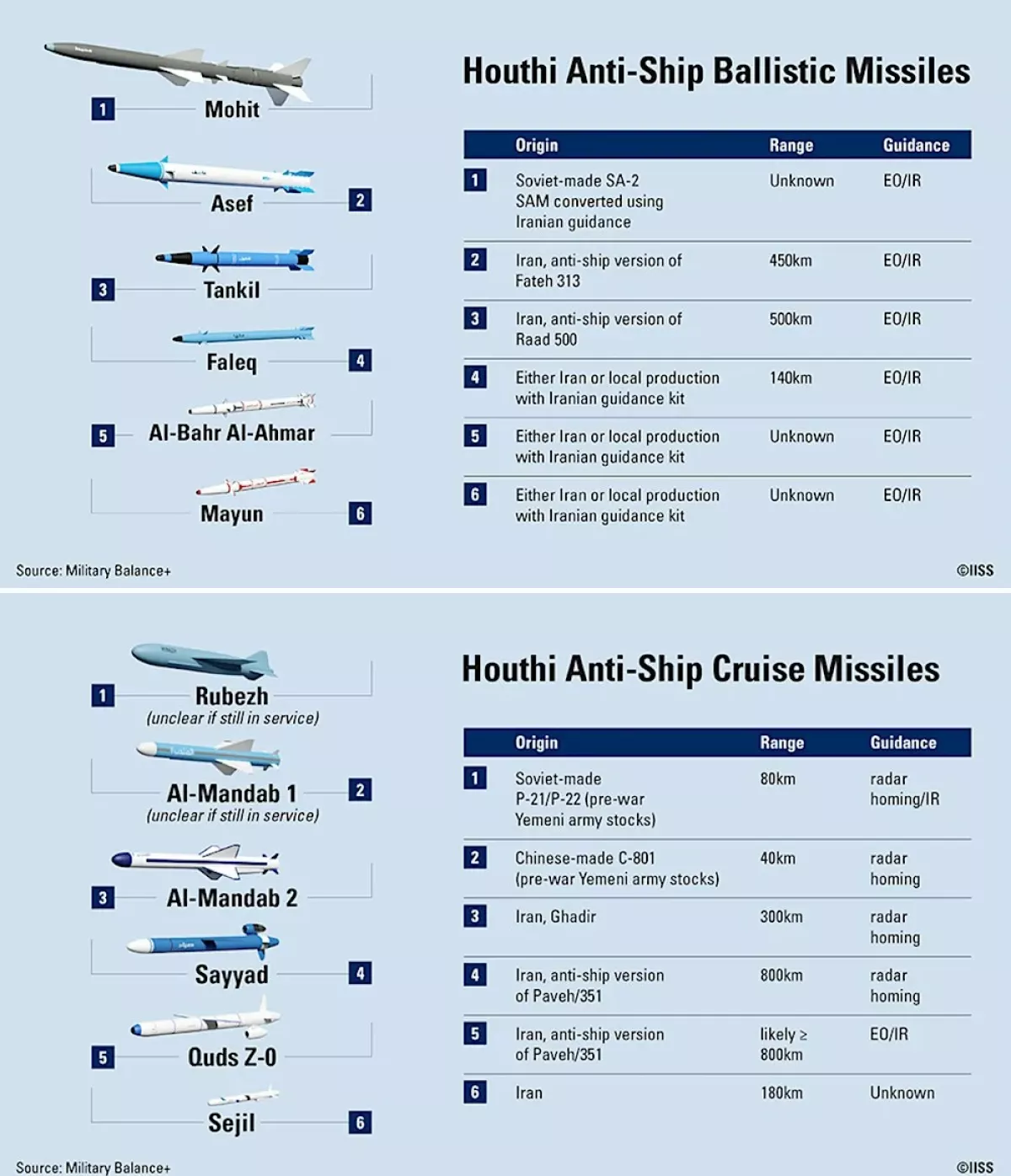US army still puzzled over source, size of Houthi’s weapons arsenal
Ansar Allah – the official name of the Yemeni Houthis rebel group - have been deeply entwined in the latest phase of hostilities in the Eastern Mediterranean following the Hamas massacre of October 7, 2023 in Israel. They have attacked multiple naval targets in the Red Sea belonging to Israel and it's allies, including the US, to show their alliance to the Palestinian cause. Despite 18 months of attacks by the Houthis, the US does not have a clear idea of how many standoff weapons they possess or how they get all of them.
This reality was acknowledged by a senior US defence official who spoke to The War Zone publication, who pointed to the group's remarkable ability to innovate and adapt its arsenal. Despite ongoing airstrikes by the US and its allies against Houthi targets in Yemen, the group's capacity to develop and deploy weapons remains intact.
“There’s some debate as to what’s in their magazine,” the official stated during a media briefing at the Air and Space Forces Association Air Warfare Symposium in Aurora, Colorado. “There’s a good bit right now we don’t know about the Houthis.”
This statement came a day before the US formally designated Ansar Allah, the Houthis’ official name, as a Foreign Terrorist Organization on March 4.
The Houthis began their attacks on shipping in November 2023 as an act of solidarity with Palestinians amid the Israel-Gaza conflict. Their actions have forced vessels to bypass the Suez Canal, opting instead for the lengthier and costlier route around Africa, raising global shipping expenses by nearly $200 billion. These assaults resulted in two sunken ships, multiple damaged vessels, the deaths of four mariners, and several hostages taken after a ship was seized. However, a significant number of Houthi-launched weapons failed to reach their intended targets.
In response, the US and its allies have been actively intercepting Houthi missiles, drones, and other threats to safeguard commercial and military vessels.
Despite these efforts, the extent of the Houthis’ arsenal remains a mystery, the official admitted, while also acknowledging their ingenuity in weapons development.

“What I can tell about the Houthis is they iterate, and they’re pretty innovative,” the official noted. “So we see them putting together weapon systems and put them together in ways, give them a try, and a lot of times they fail. But the military talks about ‘failing forward’ and being innovative, and with a begrudging tip of the hat to the Houthis, they’re actually doing that.”
The official added that their tactics have sometimes caught the US off guard.
“We’ve been surprised at times with some of the things that we see them do, and it makes us scratch our head a little bit,” the official remarked, describing the Houthis as “not super technologically advanced, but we do think they’re pretty innovative.”
Weapons arsenal
While the precise size of the Houthis’ weapons cache remains unknown, the official suggested that a significant portion of their arsenal is domestically produced.
“We do think that they do a lot of production in-house,” the official stated. “Our assessment right now is that there’s likely some key components and other things that come from Iran or other places, but a lot of the actual production is in Yemen.” The official did not specify which components the Houthis acquire externally.
The Houthis’ campaign in the Red Sea has resulted in near-continuous confrontations with the US and its allies. This has included repeated US airstrikes targeting Houthi military infrastructure. The most recent attack, according to US Central Command (CENTCOM), took place on January 8, when American forces carried out “multiple precision strikes against two Iranian-backed Houthi underground Advanced Conventional Weapon (ACW) storage facilities within Houthi-controlled territories of Yemen.” CENTCOM noted that these sites were used to conduct attacks against US Navy warships and merchant vessels in the southern Red Sea and the Gulf of Aden.
However, the impact of these strikes remains uncertain.
“I wouldn’t say we’ve changed their weapons production capabilities, because again, I’ll go back to there’s still a lot of unknowns right now,” the official admitted. “We knew some of the threats, we know some of the effects that they try and do. And there are some things we’re still working on.”
Hamas-Israel ceasefire
In January, following the announcement of a ceasefire between Israel and Hamas, the Houthis declared a halt to their shipping attacks, and there have been no such incidents since.
Despite this pause, the Houthis continue to stand out among Iranian-backed militant groups, the US official indicated.
“Lebanese Hezbollah clearly has been hurt a great deal by Israel,” the official explained. “We see militia groups in Iraq right now being less active. And so the one outlier to all of that is the Houthis. You see them very active. There are differing opinions on how much direct control Iran has over the Houthis, but we think that they continue to support them through a lot of different avenues.”
Nevertheless, the Houthis signaled their intent to resume hostilities against Israel should the ceasefire collapse.
“The Yemeni armed forces are ready to resume operations in response to Zionist violations,” Nasr al-Din Amer, deputy head of the Houthis’ Media Authority, stated, as reported by Shafaq News. “It’s too early to specify the scale of escalation, but at a minimum, Jaffa will be under fire.” According to the article, it remains unclear whether the Houthis will also restart their attacks on commercial shipping.
By Nazrin Sadigova








